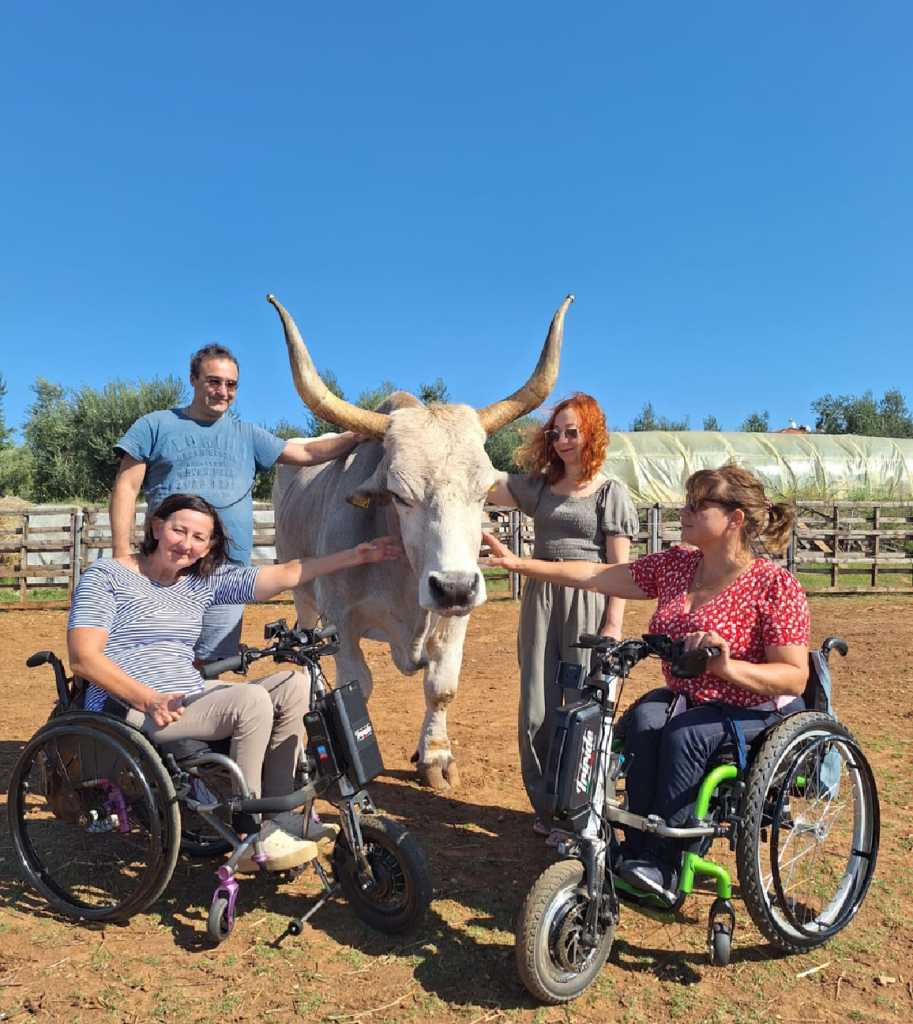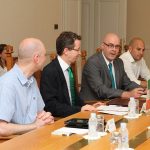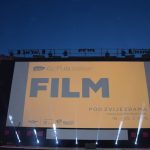January the 5th, 2025 – At first glance, it’s hard to imagine how donkeys, robotic gardeners, and the tradition of ice cream making could share a common thread. Yet, in the stories of two visionaries and enthusiasts of the Vodnjan region, Dino Babić and Sabina Valić, it all comes together harmoniously in the form of Istrian De Dignan.
With their vision and dedication, they have managed to blend historical heritage with modern innovations into numerous projects that not only preserve but also enhance the local identity in a completely new way. Marking ten years of their public engagement, we spoke with them about what drives them, the challenges they have faced, and their vision for the future of Vodnjan and the projects that are increasingly placing this unique region on the global map.
Dino Babić, founder of the Istrian de Dignan association and owner of the Longo nursery
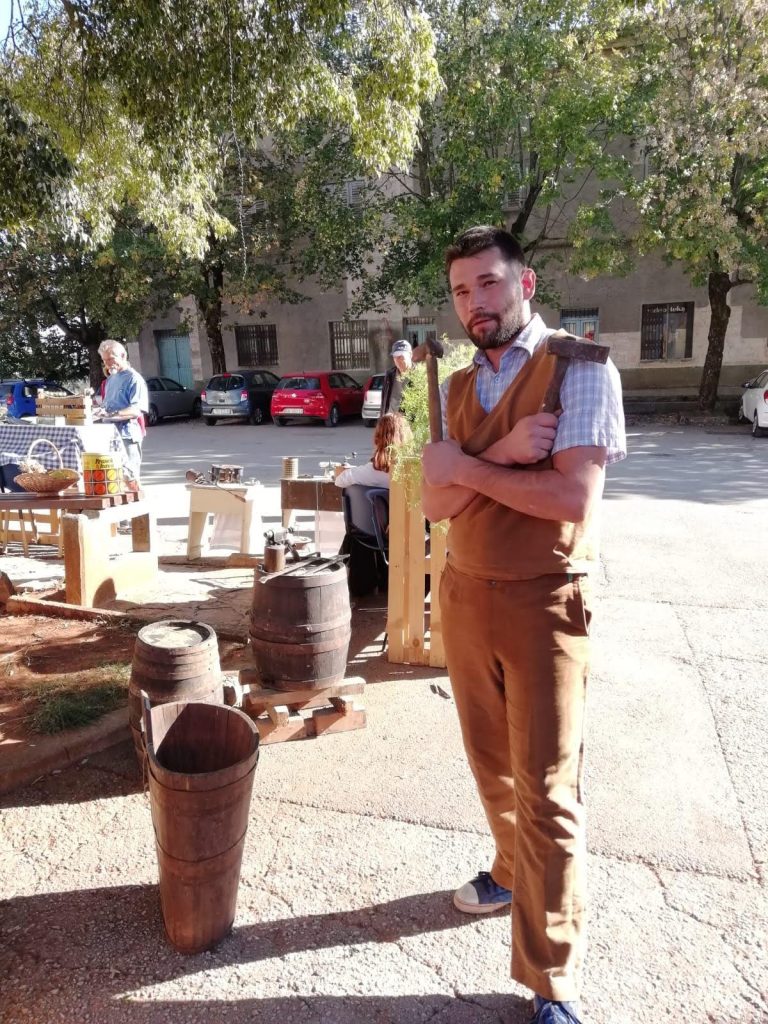
You have dedicated a decade of your life to preserving the traditions of Vodnjan – Dignano and Istria through various projects, research, and innovations. What motivated you to devote yourself so passionately to these roots? What are the key activities marking the 10th anniversary of your public engagement?
My motivation comes from a deep respect for the heritage of Vodnjan – Dignano and Istria, as well as a desire for local culture to not be forgotten but rather strengthened as part of the community’s identity. I can say that my family instilled in me a great love and passion for tradition, along with a desire for research and exploration.
A sense of responsibility motivates me. Most recently, I accepted the challenge, together with the ISTARSKO and INFORMO associations, to establish and lead INTERNATURAL University—a lifelong learning institution based at the LONGO Nursery in Rovinj. This initiative aims to institutionalize the educational processes we have developed over the years and to complete the cycle from seed to plate. I live in Ljubljana and am fortunate to contribute by designing new projects and planning educational activities. I rarely visit Vodnjan, but I am frequently in contact with the team that has taken on responsibilities within the associations and the nursery. I feel proud when I see how a team of about twenty people achieves excellent results every day, despite the fact that more than half of the staff come from vulnerable groups, including individuals with disabilities or foreigners who are still learning the language.
For the 10th anniversary, numerous activities were carried out throughout the year as part of the INTERNATURAL Festival, which connects all our projects and showcases what we have achieved together—from education to heritage preservation.
Looking back at all the years of effort and work, how challenging was it to build something you believe in, even when it might not have been easy to explain to others?
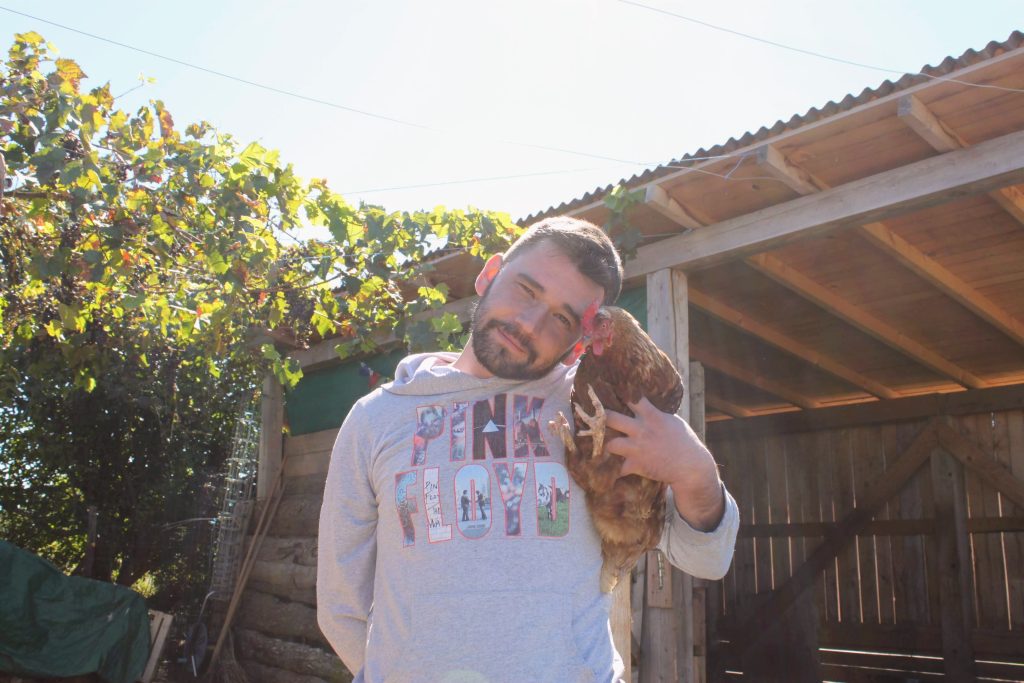
Building something new while preserving tradition required immense dedication and belief in our vision. Facing misunderstanding from the environment was sometimes challenging, but the results and positive changes in the community were always enough to encourage us to keep going. It is difficult for those who act only out of necessity or for personal benefit to understand that someone can find satisfaction in solving “impossible missions.” Some may not see the value of what we do, but I am confident no one can say that we harm society.
We’ve also encountered situations where those with all the resources did not respect how we managed with what we had. Over ten years, we’ve never let down those who supported our projects, proving we deserve their trust. The most rewarding moments come when oversight and inspection bodies confirm we are doing everything correctly. That gives the team strength and motivation. People give their best when they know their work is righteous and meaningful. We have stayed ethically strong, never allowing individuals to take precedence over the community or exploit others for personal gain. During this first decade, many people have worked and volunteered with the association, showing what they are capable of. Everyone can take pride in what has been achieved.
Which completed projects from the past 10 years would you highlight as the most significant? Which moment holds a special place in your heart?
We started by paving Statute Square and renovating the House of Traditions. Through numerous events and gatherings, we developed the Didactic Farm, the ECOLab, the Ecomuseum social enterprise, and initiated INTERNATURAL University—an institution for lifelong learning and a Slow Food community for preserving agro-food heritage. There have been so many projects it’s hard to list them all. A special memory is discovering a forgotten bread oven hidden behind a hearth during an evening gathering and restoring it to use. Another is uniting the community to help the Istrian cattle, Pipo, which demonstrated how deeply connected our activities are to people. By finding socially beneficial roles for native Istrian breeds, particularly donkeys, through onotherapy programs for individuals with special needs and children, we witness daily the wonders of nature and love.
How important is collaboration with government bodies and local self-government in implementing projects?
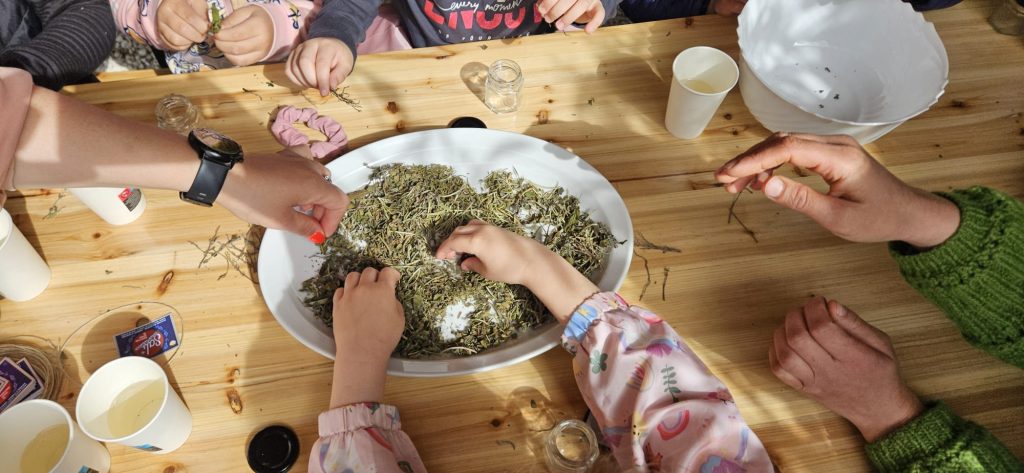
It is crucial. Without the support of the local community, the region, state, and European bodies, many projects would not be possible. Collaboration ensures resources and a shared vision for development. We preserve and value resources that are treasures of our society, and institutions recognize the passion and effort we invest. We undertake projects because we believe in their value, and the results speak for themselves.
Some people think it’s easy to design, prepare, and implement projects, as if money falls from the sky and we don’t need to account for every cent spent. Those who have never worked on projects with public bodies may believe that the funds associations receive are gifts rather than investments in addressing specific priorities. They may not realize we must continuously prove through reports that we are achieving the planned objectives. Our project proposals are evaluated by experts, and the fact that they pass evaluations at local, regional, national, and European levels—often in fierce competition—shows the quality of our work. Every completed project leaves a mark that becomes a foundation for further development.
Behind every successful project are great people. Who are the key individuals who have contributed to your team? Is there someone who served as a particular role model or inspiration?
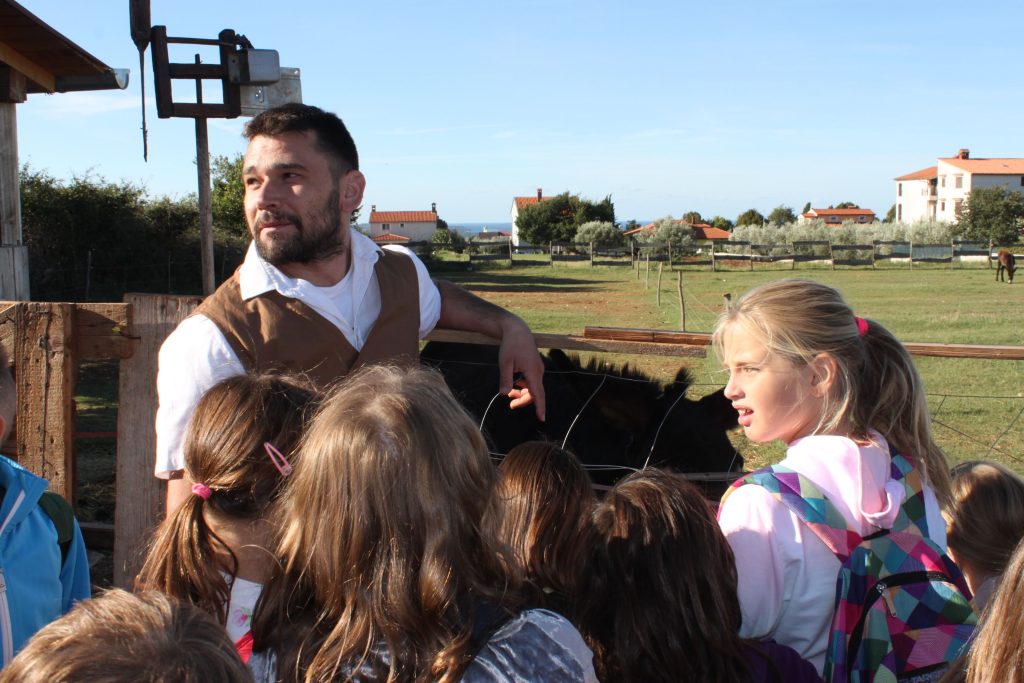
Every team member has an invaluable role. Everyone who has been part of the team over these 10 years knows how much they have contributed to the association and how proud they can be of that. We are a large community, and everyone deserves recognition.
My brother Boris, who now leads the association, has always been a role model and inspiration. From the very beginning, he has been actively involved, creating the visual identity and working on communication, projects, and administration. Without his talent, many ideas would have remained on paper. Among those who contribute most to the development of the association, I must highlight Sabina Valić. Her project work and innovative approaches have shaped effective projects that gain the support of institutions and the community. Her expertise is a key factor driving the Informo Association—a project accelerator where ISTRIAN de Dignan was founded and has grown. I am proud to be part of such a passionate team and grateful for the opportunity to learn valuable life lessons from people with big hearts. I also draw inspiration from local elders who share stories of the past—I truly miss the “Bumbari” now that I spend most of my time far from Vodnjan – Dignano.
On your Didactic Farm lives Pipo, the oldest Istrian cattle in Istria. Three years ago, you launched a crowdfunding campaign for his treatment on the international crowdfunding platform Bona Fides Invest. How is Pipo today? How many Istrian cattle currently exist in Istria, and what can be done to preserve them?
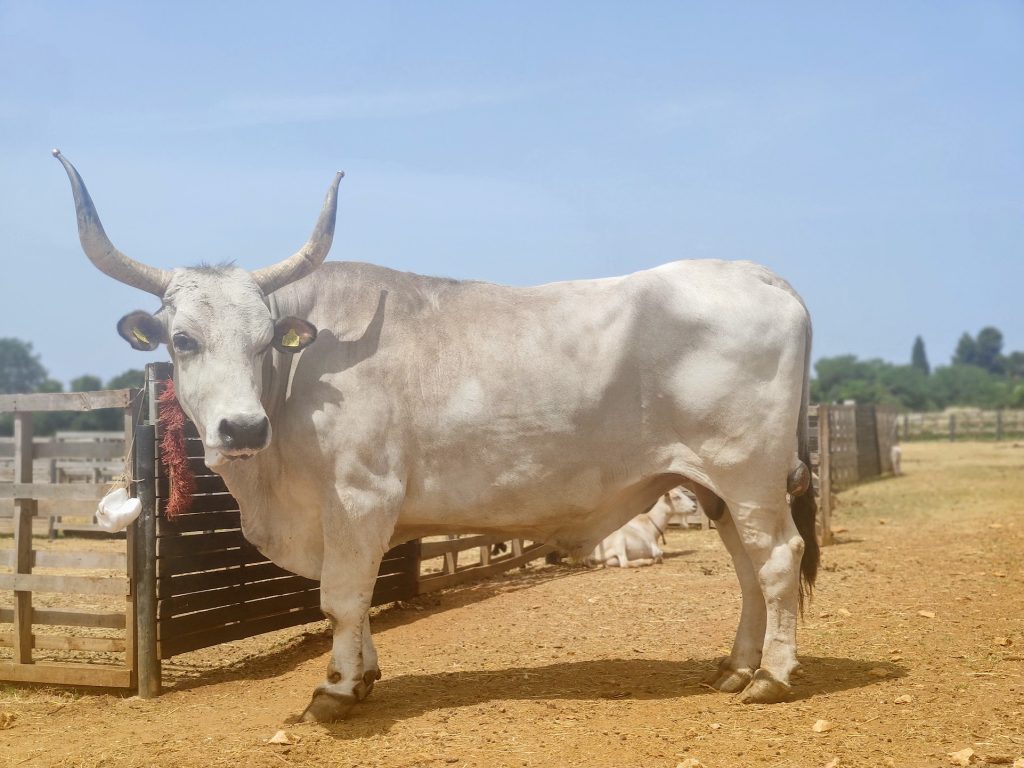
Pipo now enjoys well-deserved peace on the farm. He’s thinner than he once was, as the years pass, but we provide him with special supplements and carefully selected food to give him the highest quality of life. His story symbolizes the need to preserve indigenous breeds. Today, there are relatively few castrated Istrian cattle, or Boškarins, in Istria. Their preservation lies not in the commercialization of their meat but in the hearts of their breeders. Emilio Zonta, who leads our social enterprise, exemplifies how friendship with such a gentle giant can inspire even a person with disabilities to achieve great changes. Pipo, or Boško as friends call him, is not only the oldest Boškarin but also the one who has received the most human touch and photographs in the entire history of this noble breed. Thanks to the crowdfunding campaign on the Bona Fides Invest platform, many people helped our Boškarin. Rest assured that in his huge heart, there is a place for everyone who has ever looked him in the eye, even in a photograph.
In Vodnjan – Dignano, at the Church of St. Blaž, lies one of the largest collections of relics in the world, which is still not fully recognized as a valuable tourist attraction for Istria and Croatia. What needs to be done to change this?
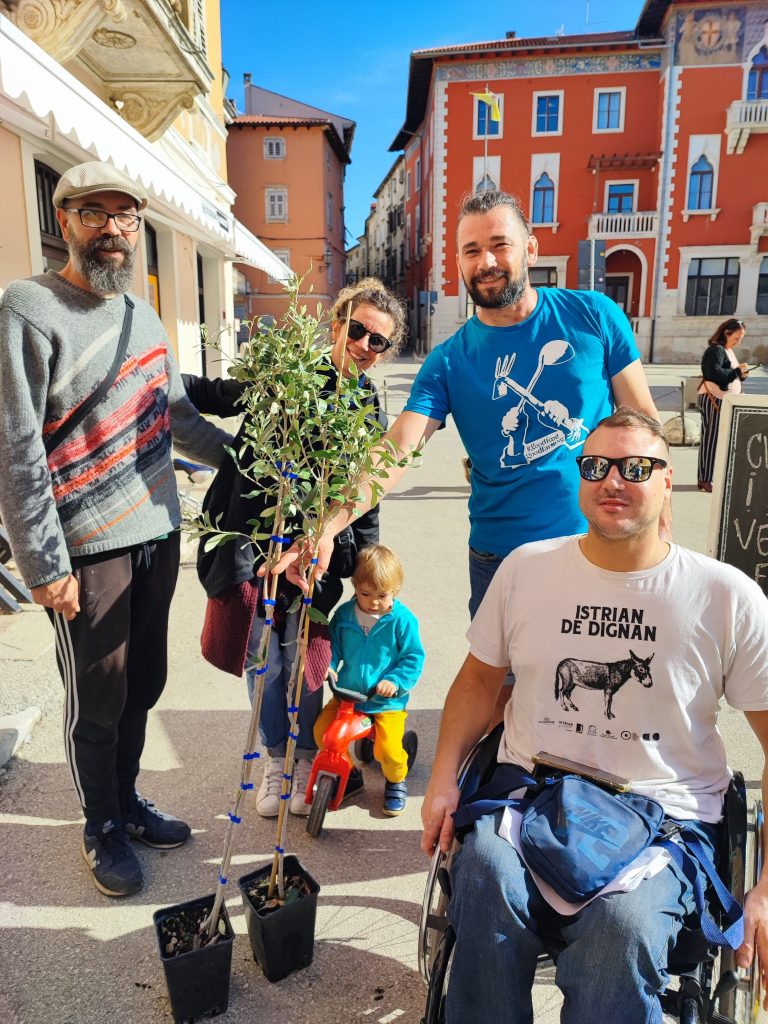
Answering this question is truly difficult because the collection of relics may, in fact, protect Vodnjan – Dignano from tourism. I am confident that unless Vodnjan – Dignano’s people develop a collective awareness of the miracle they live with, there will be neither tourism nor quality of life. Tourism can be a positive phenomenon that enriches the community or a commercial and consumerist force that transforms the town but leaves it soulless. People have varied expectations of their hometowns, including tourism as a source of financial gain. However, everyone should contribute something to their community, and tourism can then become an opportunity for connection with people and the world, unlocking development across all segments of society. These relics are remnants that teach us that even saints took nothing material with them from this world. What remains valuable are the stories of their deeds.
It is necessary to integrate this collection into the everyday lives of Vodnjan – Dignano’s people through useful lessons. When these enrich the community, people from all over the world will come, hoping to gain some of that wealth. People spend material wealth to attain something more valuable. This is the only kind of tourism that can bring positive change to our town. Becoming part of a broader religious and tourist story through digitization, educational experiences, and stronger international recognition can only result from a quest for forgotten knowledge. Every relic carries its story, and it is essential to uncover these stories because relics are far more than mere material objects.
You are currently launching a religious tourism project in Istria. Could you share with readers what it entails?
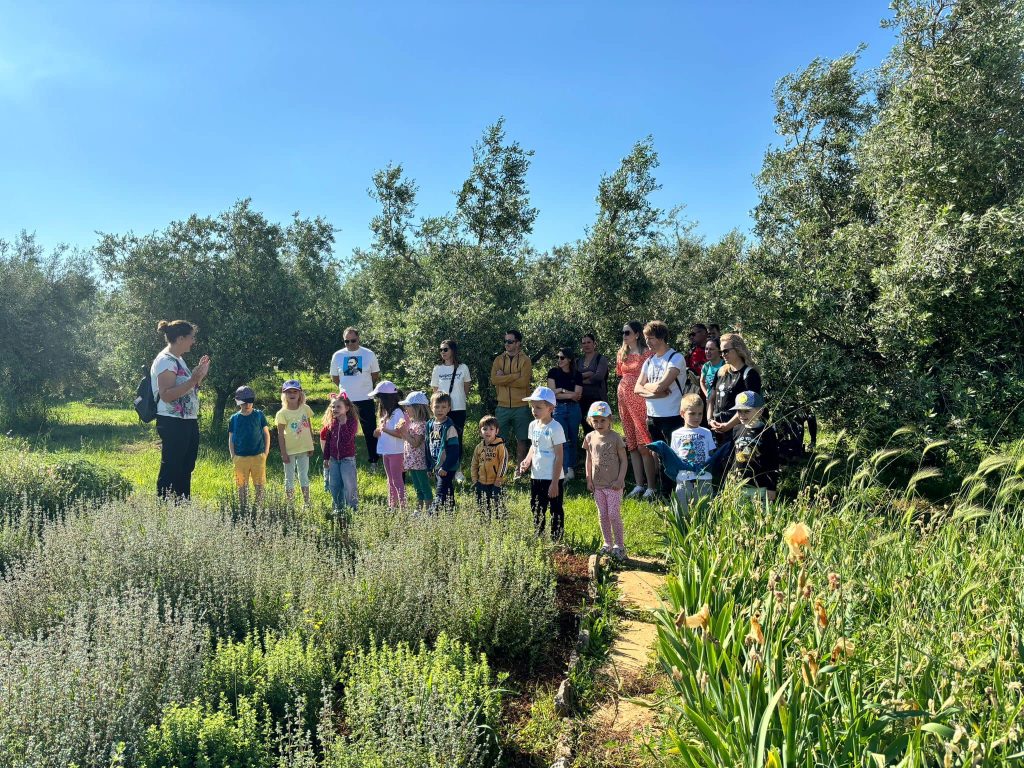
The focus is on connecting religious, cultural, and natural heritage with modern educational and tourism trends. Historical figures from Vodnjan – Dignano have left us all the elements needed for an excellent project. We plan to transform the community’s mindset and attract visitors in an entirely new way. We are linking the landmarks of Vodnjan – Dignano through various themed routes where visitors uncover the secrets of faith and health through engaging interactive experiences. It is something new, attractive, and educational that has the potential to turn Vodnjan – Dignano into a modern global attraction.
It is not easy, but the challenge is appealing. We collaborate with notable experts in religious studies, historians, tourism and heritage interpretation experts, marketing and design specialists, international film production, mobile application developers, and local producers and renters.
Vodnjan – Dignano has a rich religious, cultural, natural, and human heritage. Today, most residents of Vodnjan – Dignano are not familiar with the legacy that defines this area. We hope to contribute to a change so that Vodnjan – Dignano becomes a place everyone wishes to visit, not just another dot on Istria’s tourist map.
How have the stories you research and uncover about Vodnjan – Dignano changed your perspective on people and the community? Is there an anecdote or detail that still surprises you today?
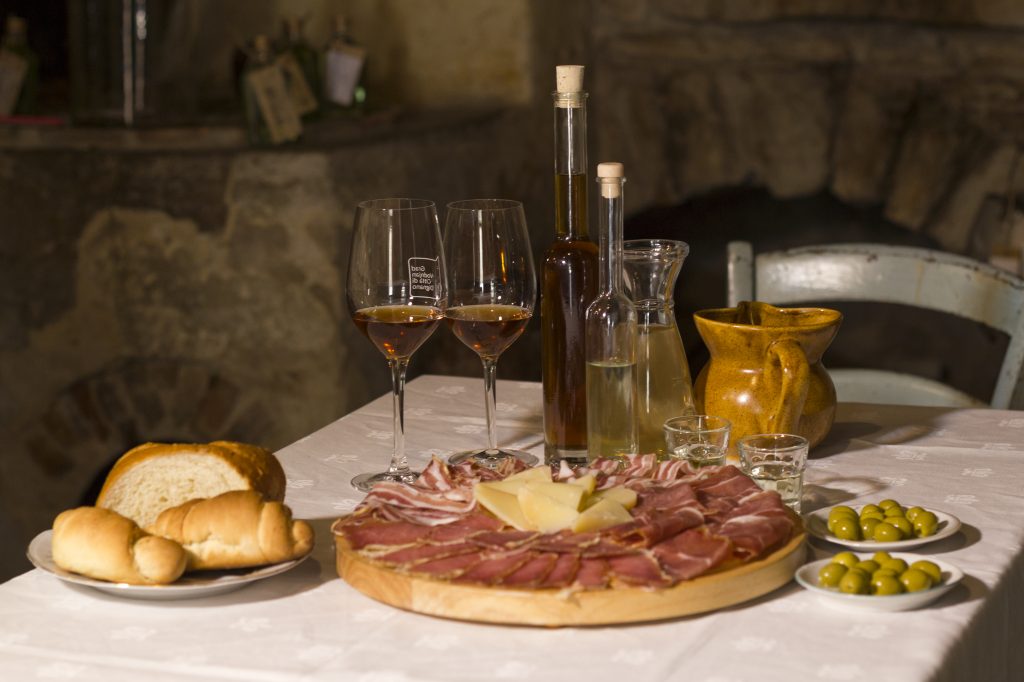
Discovering history has changed my view of the community—I realized how deeply people are connected to their roots, often without being aware of it. One fascinating and well-documented story that surprised me, and which is probably unknown to most Vodnjan – Dignano residents, is the tale of Vodnjan – Dignano’s occupation by the crew of the HMS Elizabeth, a British Royal Navy ship, in 1813. From July 20th of that year, the British flag flew over Vodnjan – Dignano for 85 days. Interesting, isn’t it?!
What is your vision for Vodnjan – Dignano’s future? What would you like people to feel when walking its streets 10 or 20 years from now?
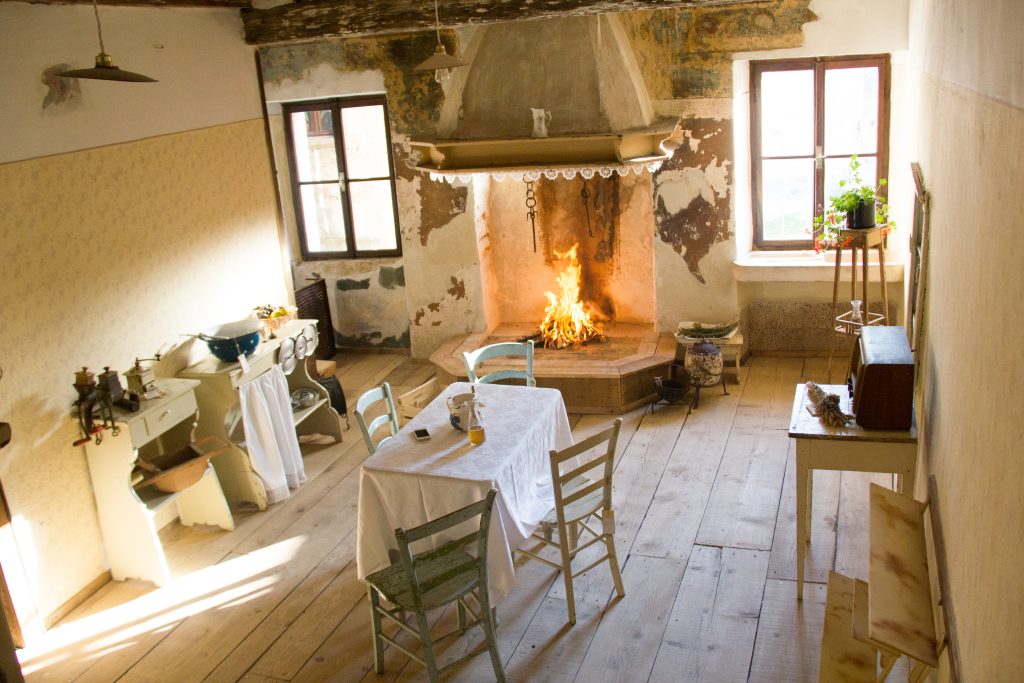
In 10 to 20 years, I want Vodnjan – Dignano to become an example of how sustainable development and tradition can go hand in hand. I dream that we will do enough to preserve the values that form the identity of a community. Without awareness of local values, Vodnjan – Dignano would be doomed to a hollow future, where people live solely in imitation of global trends.
It is beautiful to imagine that 20 years from now, anyone walking the streets of Vodnjan – Dignano will feel the love that has been poured into this place over the years.
Sabina Valić, President of the Informo Association
Sabina Valić holds a Master’s degree in Business Economics from the Faculty of Economics in Rijeka, specializing in Finance and Banking. She works as a consultant and lecturer in public procurement and as an author of professional articles on public procurement, finance, and accounting for the Center for Development of the Public and Nonprofit Sector TIM4PIN in Zagreb. She is a member of the editorial board of the professional journal TIM4PIN Magazine, editor of the book Public Procurement – Official Opinions and Case Law (2015), and co-author of the book EU Projects – From Idea to Implementation (2016). Within the Informo Association, she oversees entrepreneurial and nonprofit accounting, project preparation, implementation, and reporting, provides support to entrepreneurs, and organizes and conducts educational activities.
Looking back on all you’ve achieved in recent years, which accomplishment do you cherish the most?
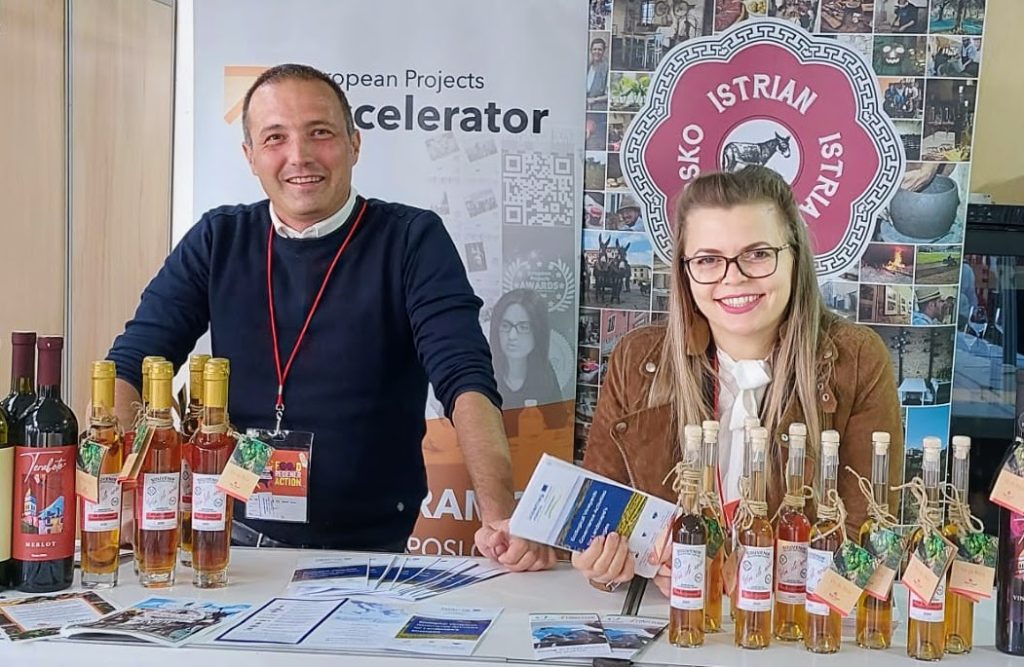
I am especially proud that we are pioneers of onotherapy in Croatia. When we see progress in individuals with special needs—when they feel pride and a sense of accomplishment through interactions with donkeys (feeding, grooming, brushing, leading)—this is the most significant achievement we could attain as a community.
I’m also proud that, despite limited resources and manpower, we consistently achieve our planned goals through additional volunteer work and what I would call “creativity in the field.”
You are pioneers of onotherapy in Croatia. Could you explain to readers what onotherapy is and what motivated its introduction? Can you describe specific therapeutic benefits observed in children?
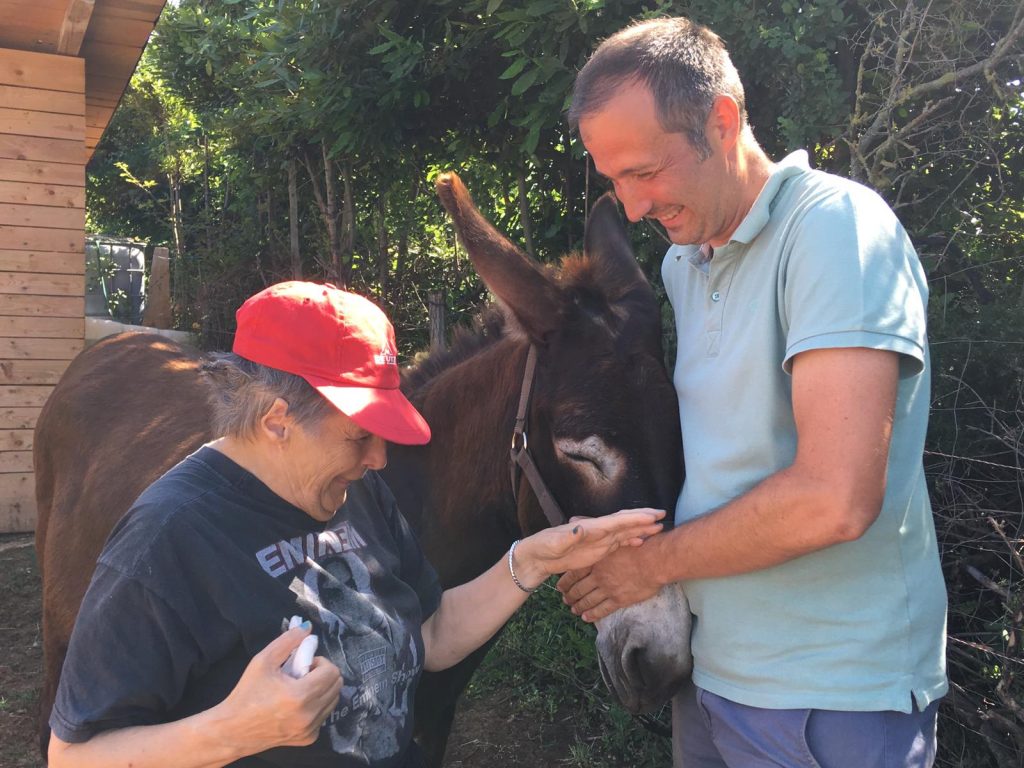
Onotherapy is therapeutic work with donkeys, where children and adults, particularly those with special needs, develop social and motor skills through interactions with the animals.
Nearby centers and institutions regularly send their users to attend our therapeutic sessions. Donkeys are excellent therapy animals due to their calm nature; they are not as imposing as horses and don’t have sharp teeth, making them immediately endearing to participants. We’ve observed significant improvements in confidence and empathy among children with special needs and individuals with illnesses. Some who were initially afraid of animals now eagerly look forward to their next onotherapy session. Many have experienced better sleep and concentration, while most remain calm during other daily activities they participate in.
Children on your farm learn patience, empathy, and responsibility from animals—qualities often not taught in classrooms. How do you view the role of animals as therapists and teachers, and is this sufficiently recognized in society?
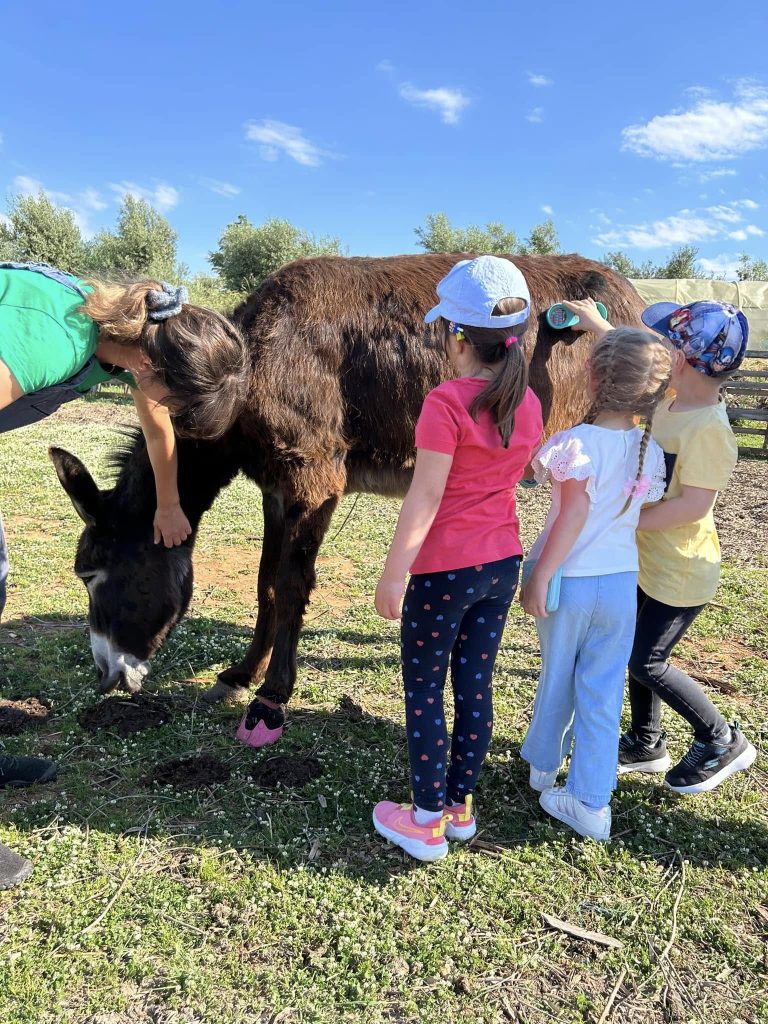
Animals have an incredible ability to connect with people and foster emotional intelligence. I am grateful for my work, as it provides a balance; when I’ve had enough of typing and office tasks, I can rehabilitate myself on the farm. After just half an hour in nature, surrounded by the silence and presence of animals—watching, petting donkeys and goats—I feel much better. Our Istrian cattle, Pipo, is an especially wise elder, enormous yet so calm and steady in his gaze. He reminds me to pause and thoughtfully consider my next steps. Just a few generations ago, almost every family had animals, and multiple generations lived together. Back then, patience, empathy, and responsibility were practiced daily through assigned tasks. Today, we are separated, lacking time for each other, and our priorities have changed. I’m not suggesting we return to “old ways” but rather that we strive for a better quality of coexistence and recognize the desire to contribute to our community.This is something we actively work on.
Our social community has yet to fully appreciate this value.
The TOMATO project combines cultural heritage and technology. How did you come up with the idea for the Tomato children’s game package? How does augmented reality contribute to interactive learning about cultural heritage? How does the project involve marginalized groups, and what feedback have you received from them?
The Tomato package is a box containing both a physical and digital game that we developed with international partners, including museums and companies specializing in game development and 3D technology. The goal was to make museum activities more accessible to children, spark interest in visits, and present traditions and artifacts in an engaging way. Each museum developed its own version of the game based on its collections. The Tomato package was created using STEM principles and adapted for children with fewer opportunities, ensuring accessibility for nearly everyone. So far, we’ve tested the Tomato package with specific kindergartens and schools, receiving positive feedback, but further testing is still ahead. We’re excited to offer visitors this new experience.
You also run STEM workshops in the agrotechnological garden. What do you consider the most significant benefits for children participating in these workshops? Could you describe the workshops, such as using the farmbot or hydroponic cultivation? Are you planning to expand activities or collaborate further with schools and kindergartens outside Vodnjan – Dignano?
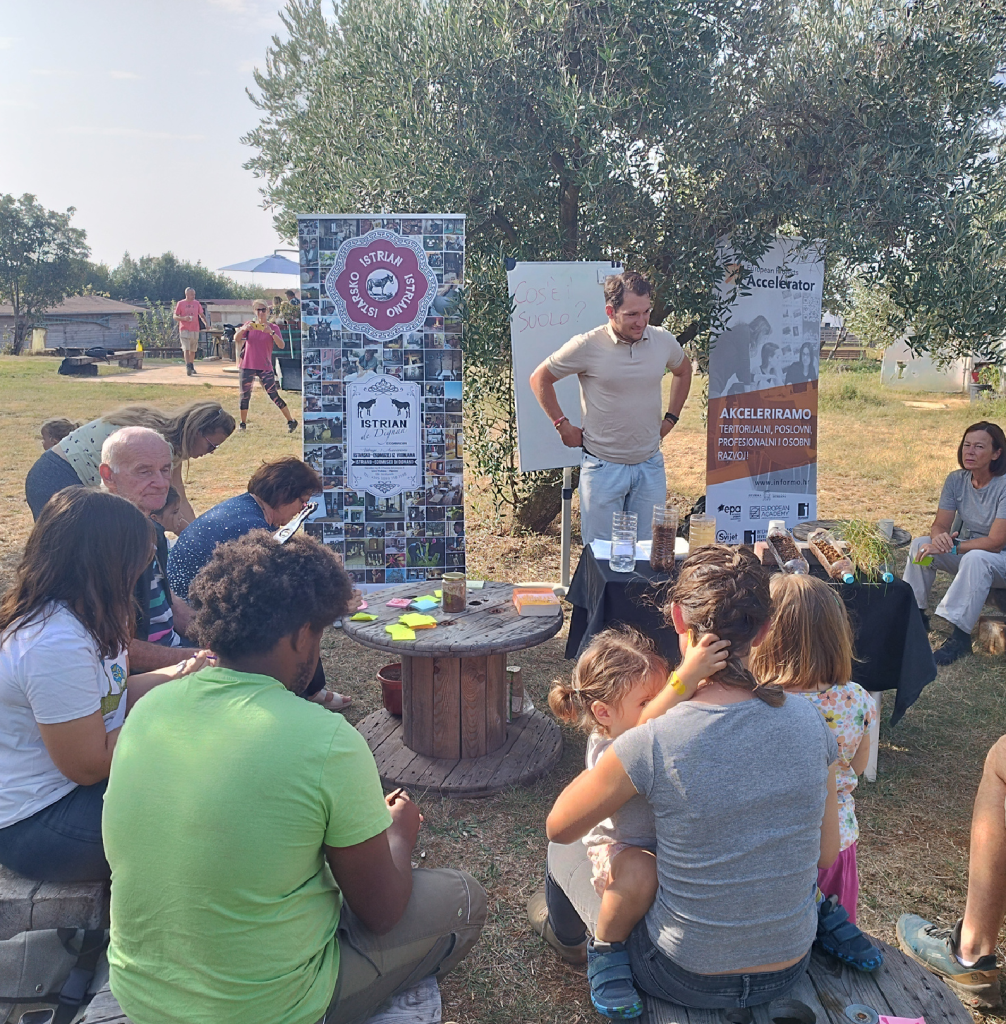
STEM education provides children with practical knowledge about technology and sustainable agriculture. We want children to value natural processes and discover the magic of the natural world around us. Workshops include using the farmbot for planting and hydroponic systems. This is a project we proposed to the City of Vodnjan – Dignano and jointly applied for, receiving support from the Ministry of Demography and Migration. The goal of this project is for children to understand the importance of agricultural and natural processes in an interactive way through STEM methodology. The farmbot—a robotic gardener—is on its way, and we can’t wait to assemble it and start using it to plant, water, and weed. For example, we’ve already started using the Plantwave device, which captures plant vibrations and translates them into different melodies. It’s fascinating to hear how the same plant “sings” in various conditions—in the wind, when touched, or when watered. At the end of the workshop season, we plan to host a concert featuring music generated by plants at the Didactic Farm.
It’s lovely to imagine children from Vodnjan – Dignano growing up with knowledge about using weather stations, hydroponic towers, and soil analysis systems. They could genuinely transform our town into a sustainable community. Other schools and kindergartens outside Vodnjan – Dignano that visit us can also participate in STEM workshops. Such projects should undoubtedly be replicated in other locations.
How did you come up with the idea for Europe’s first Ice Cream Trail? What core values do you want to convey to consumers through the Gelato Trail? What, in your opinion, is the secret of true gelato? What is the most beautiful ice cream story you’ve heard?
The idea is to connect and promote producers who create authentic gelato using traditional local ingredients and encourage pairing gelato with savory dishes. The secret of true gelato lies in high-quality ingredients and a love for its preparation.
Through the Slow Food approach, we aim to appreciate food that is good, clean, and fair, valuing the entire process from field to table. With international partners, we’re developing GelatOn the Road—a gelato trail across 12 countries, gathering artisanal gelato makers and organizing events tied to gelato through pop-up museums. Our task is to develop a concept for these museums that can be replicated in various cities across Europe. In September, the first Pop-up Museum was held in Bulgaria. In 2025, others will take place in various countries, including the one we will organize in Croatia.
The most beautiful gelato story? It’s hard to say. We’ve learned something new from every country we collaborate with. Historically, gelato spread worldwide from Italy, with its magic lying in the imagination of masters who continually find new flavors. At the Old Crafts Festival in Bale, we delighted visitors with the new flavors of elderflower and Vin de Rosa.
In addition to the Ice Cream Trail, you launched another gastronomic project called Traditional Vodnjan – Dignano Cuisine. Could you share more about it with readers? Could you provide a traditional, delicious Christmas recipe?
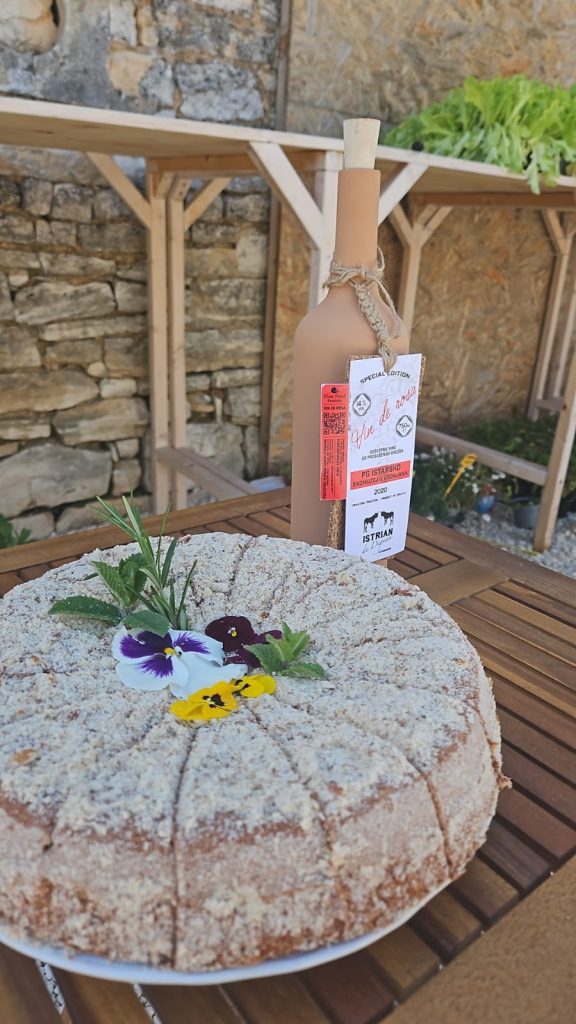
Through this project, we aim to preserve the authentic recipes of Vodnjan – Dignano, encourage children to eat local dishes made from regional ingredients, and combine tradition with modernity. The ECOlab team does an excellent job engaging children.
During Slow Food activities at school, we discussed with the principal of Vodnjan – Dignano Elementary School the challenges they face when children refuse to eat traditional meals like polenta in the school cafeteria. They didn’t even realize that when they were eating “smoki,” they were actually eating polenta. During the workshop, they learned to prepare fried polenta and fennel sauce—a healthy and simple solution where the children actively participated and, in the end, ate something they would usually refuse to eat at school. We believe education and interactive methods with children are the keys to success—they need to understand the entire process of food production from field to table, fostering connection and changing habits for themselves and their families.
As a special recipe, I recommend Torta Bumbara, or Almond Cake—a simple almond cake made for special occasions. It consists of just three ingredients: almonds, sugar, and eggs. You can watch how it is made in this video preserving the tradition: Torta Bumbara Recipe
Recipe:
- 8 eggs (room temperature)
- 300 g sugar
- 300 g almonds (plus extra for sprinkling)
Instructions:
- Separate egg whites from yolks.
- Whisk the egg whites into stiff peaks.
- Beat the yolks with sugar until creamy.
- Gradually fold in ground almonds and egg whites, alternating and mixing gently to retain air in the batter.
- Butter and lightly flour a cake pan, shaking off excess flour.
- Pour the batter into the pan and place it in a cold oven.
- Bake at 180°C for 40 minutes.
- Once cooled, sprinkle with powdered sugar and chopped almonds.
Vodnjan – Dignano and Istria are full of stories. If you could choose one tradition or custom from Vodnjan – Dignano to share with the world, what would it be and why?
If I had to choose, it would be the tradition of baking bread in communal ovens. At our House of Traditions – the Ecomuseum – there is an old bread oven that could bake enough bread for 15 families at once. It is enormous, with a diameter of over 3 meters. Each woman would knead her bread at home and mark it with a unique sign to avoid mix-ups during baking.
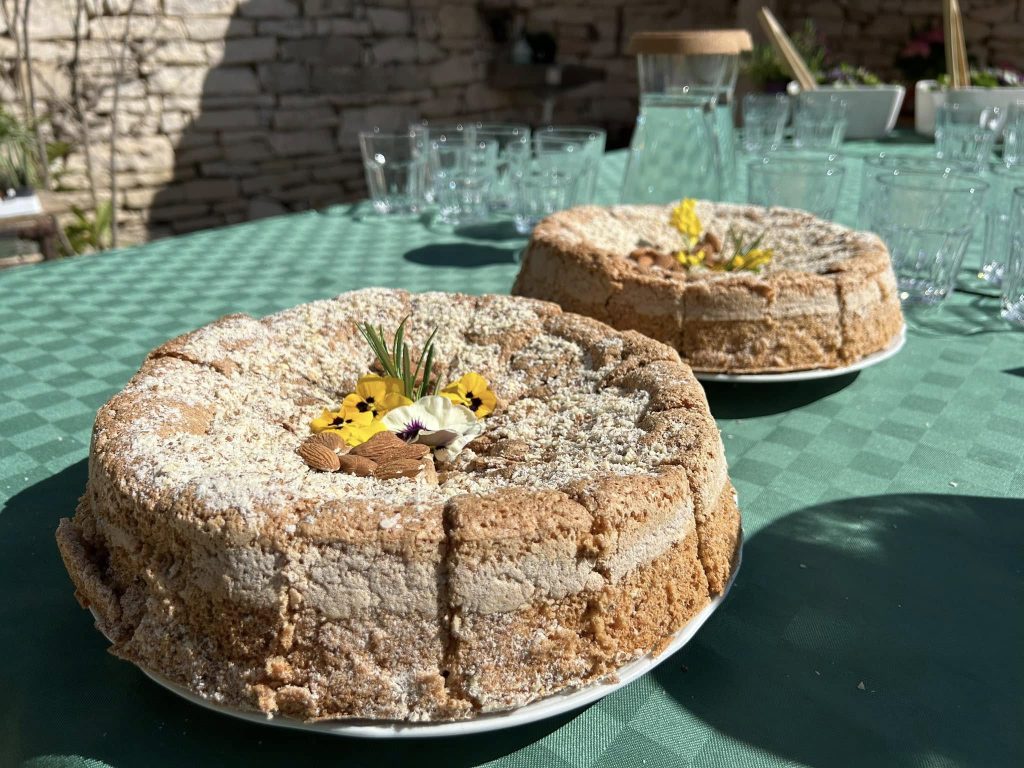
This oven symbolizes community, effort, and patience. We aim to revive this tradition, and it is one of our planned projects for early 2025.
What does your vision for the future development of your projects look like? What new initiatives are you preparing?
Our focus is on further integrating culture, sustainable development, and education. We are currently preparing additional STEM projects, expanding onotherapy, and launching programs through INTERNATURAL University to value heritage, culture, new knowledge, and the environment. Our goal is to carry out tangible projects with long-term benefits.
So far, we have distributed over thirty thousand olive, vegetable, and flower seedlings free of charge to the local community. We want to green our community, and we will succeed!
As the year ends, we often reflect and summarize. What are you most grateful for this year, and what are your wishes for everyone in the New Year?
I am grateful for the opportunity to work with friends on projects we believe in. Being part of civil society is my life’s calling. It is wonderful to work alongside people of all generations, all rowing in the same direction. It’s especially fulfilling when young people join us, showing they care, want to be active in the association, and take responsibility. It makes it easier to part ways with those who, after many shared adventures, are led by fate to other paths. We are professionals, but creating together deeply bonds us in friendship. And we do create a lot. This year, we exceeded our planned goals. It is never easy, and we never choose simple solutions, so it’s always a challenge.
However, I am most grateful to my family; their opinion is always the most important to me and often the most critical. This is where I find my motivation because involvement in the association demands a lot of time and energy, and I do it all primarily with the hope that my children will grow up in a healthy environment. It is wonderful to include them in my work; these are unforgettable experiences where we feel part of a community connecting so many different families. I am also grateful to the many experts who value what we do, and I am proud when they join us, coming from all over the world to learn from us. Alongside our local team members, we have people from Norway and Mexico, and this year we had learners, workers, and volunteers from New Zealand, Spain, France, Italy, Germany, Hungary, Montenegro, and Greece. This is truly invaluable to me.
I am also thankful for the daily challenges we face because they make us stronger, wiser, and more connected. I wish everyone inner peace, the ability to seek virtues in others, and the courage to follow their dreams.

